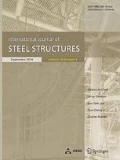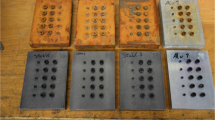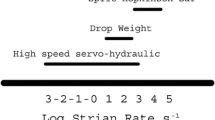Abstract
A turnbuckle is a device that is installed between tension wires or rods for the purpose of adjusting the tensile force and length of tension members. Tensile force can be adjusted by rotating the body of turnbuckle but the conventional turnbuckle is incapable of measuring tensile force without specific measurement equipment such as a load cell, accelerometer and data logger, etc. New turnbuckles have therefore been developed for adjustment and easy measurement of tensile force. In previous works, the newly developed turnbuckles have been tested and analyzed in order to establish their size, shape and measurable load capacity. The present study addresses the design process and ultimate capacities of new turnbuckles having measurable load capacities of 100, 200 and 300 kN. The ultimate load capacities are obtained via experimental investigation. For each turnbuckle the ultimate loads and the first yield loads are about 5 times and 1.5 times the service load, respectively.










Similar content being viewed by others
References
AISC. (2010). Specification for Structural Steel Buildings (ANSI/AISC 360–10), American Institute of Steel Construction (AISC). Chicago: Illinois, USA.
ASTM. (2014). Standard Specification for High-Strength Carbon-Manganese Steel of Structural Quality (ASTM A529/A529M), American Society for Testing and Materials (ASTM). Philadelphia: Pennsylvania, USA.
Chae, H. S., Choi, I. H., & Lee, I. H. (2005). Structure strengthening method of external post-tension with tendons and turn buckles. Magazine of Korean Society of Steel Construction, 17(2), 66–75. ((in Korean)).
Chang, D. I., & Kim, H. J. (1998). A study on the dynamic characteristics of tension structures according to initial tension forces and equilibrium shape. Journal of Korean Society of Steel Construction, 10(1), 73–83. ((in Korean)).
ISO. (1993). General-Purpose Metric Screw Threads – Basic Dimensions (ISO 724). Geneva, Switzerland: International Organization for Standardization.
KSA. (2007). Industrial Standard 2008 Handbook – Carbon Steels for Machine Structural Use (KS D 3752), Korean Standards Association (KSA). Korea: Seoul.
Lee, S. H., Shin, K. J., & Lee, H. D. (2013). Ultimate strength and design method of turn-buckle for measuring tensile force. Journal of Korean Society of Steel Construction, 25(1), 61–70. ((in Korean)).
Olsson, J. (2006). Safety Turnbuckle. Karlstad, Sweden: Karlstads Universitet.
Park, S. W. (1999). Roof structure suspended and under-tensioned using high-tension cables or steel rods I. Magazine of Korean Society of Steel Construction, 11(4), 121–133. ((in Korean)).
Park, S. W. (2000). Roof structure suspended and under-tensioned using high-tension cables or steel rods II. Magazine of Korean Society of Steel Construction, 12(1), 104–111. ((in Korean)).
Shin, K. J., & Lee, S. H. (2006). Development of a tensile force measurement device for long-term. Journal of Korean Society of Steel Construction, 18(6), 759–768. ((in Korean)).
Shin, K. J., & Lee, S. H. (2011). Analysis and test of modified turn-buckles for measuring tensile force. Journal of Construction and Steel Research, 67(5), 833–840.
Tensitron, Inc. (2019) https://www.tensitron.com
Acknowledgements
This work was supported by the National Research Foundation of Korea (NRF) grant funded by the Korea government (MSIT) (No. 2019R1H1A1035594).
Author information
Authors and Affiliations
Corresponding author
Additional information
Publisher's Note
Springer Nature remains neutral with regard to jurisdictional claims in published maps and institutional affiliations.
Appendix A Design Examples
Appendix A Design Examples
The following examples illustrate design procedures for the new turnbuckle installed between tension members. Calculations for both the tension member and the new turnbuckle are presented. The examples are provided for two cases; for a cantilever beam supported by an inclined steel rod at the free end and for a beam retrofitted with a steel rod.
1.1 Cantilever Beam
A cantilever beam has a length of 6 m and carries a uniform dead load of 14 kN/m and a uniform live load of 7 kN/m (Fig. 11). Design the tension member and new turnbuckle.
-
1.
Calculate required tensile strength (Pr)
$$- DL = \frac{{3\omega_{DL} L}}{8\sin \theta } = \frac{3 \times 14 \times 6}{{8\sin 30^\circ }} = 63.0{\text{kN}}$$$$- LL = \frac{{3\omega_{LL} L}}{8\sin \theta } = \frac{3 \times 7 \times 6}{{8\sin 30^\circ }} = 31.5{\text{kN}}$$– Pr = 1.2DL + 1.6LL = 1.2 × 63.0 + 1.6 × 31.5
= 126.0 kN.
-
2.
Assume the tension member
– Try a thread M27 × 3 of steel rod (ISO 1993) and ASTM A529/A529M Gr. 55 (AISC 2010).
– Material properties: Fy = 380 MPa, Fu = 485 MPa.
–Geometric properties: Ag = 572.6 mm2, Ae = 459.4 mm2.
-
3.
Check the lesser of tensile yielding and rupture limit
–For yielding in the gross section: ϕtPn = ϕtFyAg = 195.8 kN.
–For rupture in the net section: ϕtPn = ϕtFuAe = 167.1 kN.
–The tensile strength of steel rod is governed by limit state of the rupture in the net section.
\(\therefore\) 167.1 kN > 126.0 kN [o.k.]
-
4.
Check load combination for the new turnbuckle
–Zone A (measurable load state): 1.0DL + 0.5LL = 1.0 × 63.0 + 0.5 × 31.5 = 78.8 kN.
–Zone B (service load state): 1.0DL + 1.0LL = 1.0 × 63.0 + 1.0 × 31.5 = 94.5 kN.
–Zone C (limit state): 1.2DL + 1.6LL = 1.2 × 63.0 + 1.6 × 31.5 = 126.0 kN.
\(\therefore\) The new turnbuckle for 100kN is selected.
-
5.
Check fracture strength of new turnbuckle using tabulated values (See Table 3)
\(\therefore\) 721 kN > FuAe = 222.8 kN [o.k.]
1.2 Simple Beam
A beam retrofitted by steel rod has a length of 6 m and carries a uniform dead load of 12 kN/m and a uniform live load of 8 kN/m (Fig. 12). Design the tension member and new turnbuckle.
-
1.
Calculate required tensile strength (Pr)
\(- DL = \frac{{5\omega_{DL} L}}{16\sin \theta } = \frac{5\times 12\times 6}{{16\sin 10^\circ }} = 129.6\) kN
$$- LL = \frac{{5\omega_{LL} L}}{16\sin \theta } = \frac{5 \times 8 \times 6}{{16\sin 10^\circ }} = 86.4{\text{kN}}$$– Pr = 1.2DL + 1.6LL = 1.2 × 129.6 + 1.6 × 86.4
= 293.7 kN.
-
2.
Assume the tension member
– Try a thread M39 × 4 of steel rod (ISO 1993) and ASTM A529/A529M Gr. 55 (AISC 2010).
– Material properties: Fy = 380 MPa, Fu = 485 MPa.
– Geometric properties: Ag = 1,194.6 mm2, Ae = 975.8 mm2.
-
3.
Check the lesser of tensile yielding and rupture limit
– For yielding in the gross section: ϕtPn = ϕtFyAg = 408.5 kN.
– For rupture in the net section: ϕtPn = ϕtFuAe = 354.9 kN.
– The tensile strength of steel rod is governed by limit state of the rupture in the net section.
\(\therefore\) 354.9 kN > 293.7 kN [o.k.]
-
4.
Check load combination for the new turnbuckle
–Zone A (measurable load state): 1.0DL + 0.5LL = 1.0 × 129.6 + 0.5 × 86.4 = 172.8 kN.
–Zone B (service load state): 1.0DL + 1.0LL = 1.0 × 129.6 + 1.0 × 86.4 = 216.0 kN.
– Zone C (limit state): 1.2DL + 1.6LL = 1.2 × 129.6 + 1.6 × 86.4 = 293.7 kN.
\(\therefore\) The new turnbuckle for 300kN is selected.
-
5.
Check fracture strength of new turnbuckle using tabulated values (See Table 3)
\(\therefore\) 1,649 kN > FuAe = 473.2 kN [o.k.]
Rights and permissions
About this article
Cite this article
Lee, SH., Shin, KJ., Shin, HM. et al. Design Procedure and Ultimate Capacity of New Turnbuckle for Measuring Tensile Force. Int J Steel Struct 21, 626–633 (2021). https://doi.org/10.1007/s13296-021-00461-6
Received:
Accepted:
Published:
Issue Date:
DOI: https://doi.org/10.1007/s13296-021-00461-6






